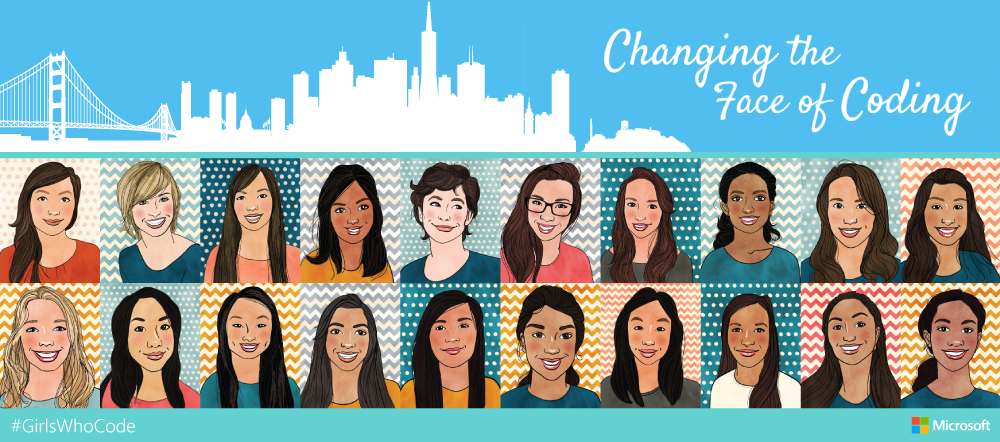Originally published here
“When girls learn to code, they become change agents in their communities.” – Reshma Saujani, Founder, Girls Who Code

Perhaps a decade or two ago, attaining basic literacy may have been a luxury or even challenging. Not anymore. The world is changing fast. Education and educational institutes are not what they used to be. Knowledge and literacy are no longer coveted commodities that can only be distributed at formal centres of education. With the advent of online education, the focus is shifting from institutes to students/individuals. Perhaps now is the time where we can safely say that the need of the hour has shifted from basic literacy to computer literacy. In today’s day and age, our capabilities can be largely augmented by machines. Therefore learning to code is simply a must in order to stay ahead of the game and to be able to communicate intelligently with machines. And Reshma Saujani is making it possible for girls across the United States to stay ahead of the game in today’s machine age.
Reshma Saujani is a woman who wears many hats. She is an American lawyer and a politician. She is the first Indian-American woman to run for Congress. In September 2015, Saujani was mentioned under Fortune Magazine’s 40 Under 40 list. She has authored Women Who Don’t Wait in Line: Break the Mold, Lead the Way, published in 2013. But today, let’s talk about her non-profit organization, Girls Who Code (GWC). Saujani founded Girls Who Code, a United States based organization in 2012 in an attempt to bridge the gender gap in technology.
The initial idea behind GWC was an experiment in early 2012 when she was campaigning for the United States Congress. She noticed the schools around her campaigning locations visibly lacked girls in computer science classrooms. Saujani was quick to associate this gender disparity to lack of women in technology. According to Saujani, the peak time around which a student can be intrigued and engaged about the science subjects is also roughly around the time most girls attain puberty and are therefore compelled to focus on several other issues. As a result, girls tend to get left behind and the interest in computer science ebbs away gradually. She also observed that the gender gap has worsened after the 1980s. Therefore, she set out to create camps to encourage young girls to learn coding. What started out as an experiment four years ago culminated into a national organization that provides support and knowledge to several young women across the country to study and pursue careers in tech fields which are otherwise dominated by men.
Girls Who Code has grown from 20 girls in New York to 10,000 girls in 42 states. And not only that: the organization boasts of alumni who are now majoring at the top Computer Science Universities across the nation; UC Berkeley, Stanford, and Harvard to name a few. They run about 40 clubs and 10 summer camps across the nation. Apart from providing education and tech support, GWC also allows and encourages individuals to participate, volunteer and help facilitate running clubs and camps across the country. The summer immersion programs now take place in leading technology companies. Girls Who Code programs work to inspire, educate, and equip girls with the computing skills to pursue 21st century opportunities. Because of its popularity, Microsoft Youth Spark was eager to partner with Girls Who Code to invite girls across the country to see the possibilities of computer literacy. This partnership provides support and employment opportunities to women in the Bay Area, Boston, New York, Chicago and Redmond. Other partners of GWC include Accenture, Amazon, GE, ESPN, Viacom, Dell and many more. Girls Who Code is an amazing and fostering initiative by an enterprising woman. Reshma Saujani has done wonders by instilling hope in every little girl that she can code if she wants to! And for all aspiring young techies such as myself, one can hope that her organization becomes global soon. After all, the best kind of education is an education without barriers.



